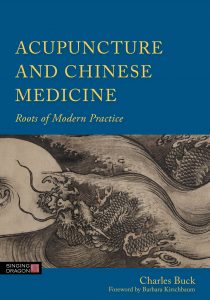Charles Buck is widely respected as a practitioner, educator and author in the field of acupuncture and Chinese medicine. Originally from a medical science background he became one of the first to practise and teach Chinese herbal medicine in the UK over thirty years ago. He has since gained respect for his knowledge and insight and has made significant contributions to its development in the UK and Europe. In this article, he gives a short overview on how traditional Chinese therapies, such as acupuncture and moxibustion, first made their way to Europe, based on his book, Acupuncture and Chinese Medicine.
Between 1580 and 1680 Jesuit missionaries, traders and diplomats brought a slow trickle of hearsay medical knowledge to the West from China. Trade with China introduced Europeans to Ming and Qing dynasty ideas and aesthetics through fine commodities such as porcelain, silk and tea. Information on acu-moxa treatment filtered into Europe on the back of the wider romances with Chinoiserie that occurred in the 17th and 18th centuries. Around the same time the Chinese purgative herb da huang (Rheum palmatum) was supplied as a medicinal product to apothecaries across Europe – coming along the Silk Route it was distributed via Istanbul and known as ‘Turkey Rhubarb’.
A difficulty at that time was a near complete absence of appropriate scholarship, meaning that understanding was poor compared to more recent times. Rumours from traders and travellers’ tales grew about the great medical accomplishments of China’s traditional physicians, their diagnostics skills, their scholarly adeptness in herbal medicine and their intriguing physical therapies such as acupuncture, moxibustion, bleeding and cupping.
One of the very first medical books translated into the European languages was by a Dutch minister of the church – the Reverend Hermann Busschof of the Netherlands East India Company. Busschof had been working in Java and Sumatra when his daughter was successfully treated by a female acupuncture-moxibustion practitioner from Southwest China using her ‘fire therapy’. Having himself suffered from terrible gout for 20 years he was persuaded to see the Chinese physician, who gave one treatment using 20 cones of moxa on Busschof’s foot. He reported complete remission for a year.
Excited about this curious eastern therapy, Busschof brought a moxibustion text back to the Netherlands and translated it into Dutch. His Essays on Gout was published in 1675. That same year, William Temple, the British ambassador in The Hague, was experiencing gout that caused such severe pain, inflammation and swelling that his physicians feared that amputation of his foot would be the only option. The novel moxa treatment was suggested and Temple was quickly cured. A little later, a maid of Temple’s had her toothache treated using moxa, again with good results. As a new convert, Temple wrote an essay on his experiences and news of this miraculous Chinese treatment quickly spread through London’s high society.
The news soon excited the interest of the Royal Society of Medicine who immediately arranged for Busschof’s book to be translated from Dutch. It was published in English in 1676 and moxabustion therapy quickly became popular among London’s society physicians, allowing them to successfully treat a previously intractable affliction that was common among their clientele. In the same year, a similar textbook on moxa also appeared in German.
Another early discussion of acu-moxa appeared at the hand of the physician Willem Ten Rhyne who had been exposed to what he called De Acupunctura in his travels to Japan. Here, Ten Rhyne also encountered the distinctive ‘meridians’ concept (which maybe the first use of this word in a European language). In 1683 he published a textbook on arthritis in Latin that devoted 20 pages to acu-moxa treatment. That same year the term ‘acupuncture’ made its first appearance in the Oxford English Dictionary where it has remained ever since.
 Acupuncture and Chinese Medicine
Acupuncture and Chinese Medicine
Roots of Modern Practice
Charles Buck
Drawing on his extensive experience and study in the field, Charles Buck presents an authoritative and accessible account of the history of acupuncture and Chinese medicine. The book provides an accurate overview, focusing on the key developments that are of most practical relevance to clinicians of today.
